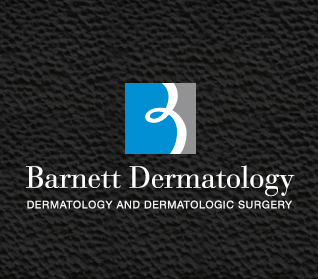OVERVIEW
MEDICAL DERMATOLOGY
Facial Brown Discoloration (Hyperpigmentation, Melasma)
COSMETIC DERMATOLOGY
Conditions : Cosmetic Dermatology
Unwanted Hair
Hair grows on all areas of the human body except for the palms of the hands, the lips, and the soles of the feet. Often times, hair can grow in areas that are unsightly and difficult to shave. Excess and unwanted hair can be treated with different types of lasers. At Barnett Dermatology we have several types of lasers, as no one wavelength works safely for all skin types. Remember, the total number of treatments required varies greatly from one person to another. Our goal is to help you reach a degree of hopefully permanent hair reduction with a minimum amount of side effects. The vast majority of our patients are very satisfied with their improvement.
Who is a candidate for laser hair removal?
Individuals with normal hair growth, who are tired of constantly shaving, plucking or waxing their unwanted hair, are ideal candidates for laser hair removal (LHR).
Any individual with excessive hair growth who is unhappy with the appearance of the hair and seeking a long-term solution is also a candidate for LHR. Puberty, pregnancy, menopause, heredity, or medications are some of the more common causes of excessive hair growth.
This procedure is usually most effective on individuals with dark hair and light skin; however, most patients are able to achieve successful results. Nonetheless, it is important to have realistic expectations about LHR in order to be satisfied with the results.
Laser Hair Removal Treatments
At each treatment session, a topical anesthetic will be applied to the area to minimize pain and discomfort. The laser is then moved across the targeted areas with a hand-held device. Patients may experience the sensation of a rubber band snapping on the skin during this procedure, but most are able to tolerate the procedure well.
During the treatment, hair follicles in the active growth state are disabled during. Multiple treatments will be needed in order to achieve optimal results, since hair grows in cycles, and one treatment will not be able to destroy all hair follicles. Most patients experience the desired results after four to six treatments, spaced four to eight weeks apart. The length and quantity of treatments depends upon the location of the hair and the patient's individual response to treatment. Patients who wish to remove hair in between treatment sessions can shave the treated area if they desire, but should avoid using other types of temporary hair removal such as plucking or waxing.
After each treatment, you may experience some redness and swelling in the treated area; however, these symptoms usually resolve on their own within a few hours to a few days. You can return to work and other normal activities immediately after treatment. Excessive sun exposure should be avoided for a few weeks after the treatments. The most common complication of laser hair removal is regrowth of the unwanted hair, which can often be treated through additional treatment sessions.
The results of the LHR procedure are visible immediately, but hair may continue to grow until the full course of treatment is complete. Through multiple treatment sessions, you can expect to achieve long-term results.
Pre-Treatment Preparation
1. The treatment area needs to be shaved to skin level. Occasionally, one day of hair growth may be necessary and helpful so that the area being treated is visible.
2. Avoid waxing, plucking, threading or electrolysis of the hair for 4-6 weeks prior to treatment. The laser needs the hair at skin level in order to effectively destroy the hair follicle.
3. Avoid excessive sun exposure for a few weeks prior to treatment. The lighter skin allows more energy to be delivered to the desired target.
4. Certain medications such as Accutane should be avoided during and 6 months prior to the treatment sessions. Medications such as Accutane can make your skin susceptible to damage from the laser. If in doubt, please call us beforehand.
5. Please remember to notify us if you have a history or cold sores.















